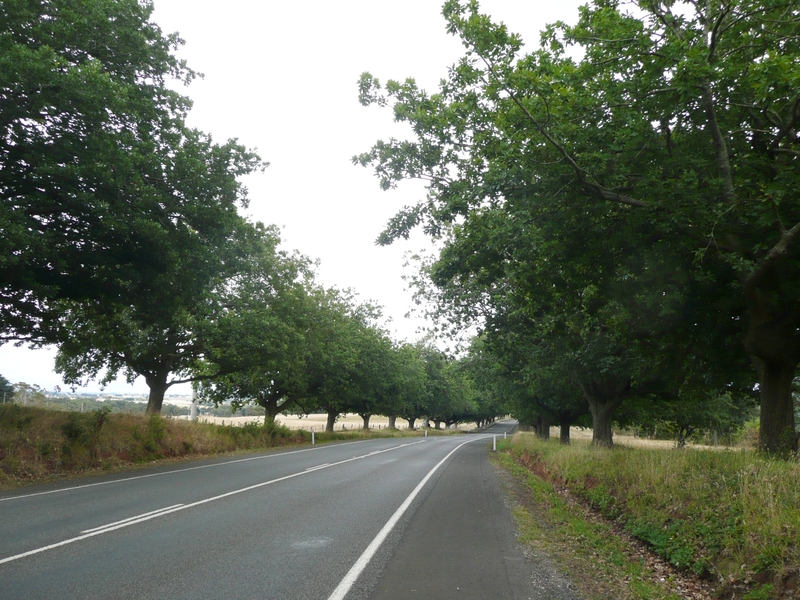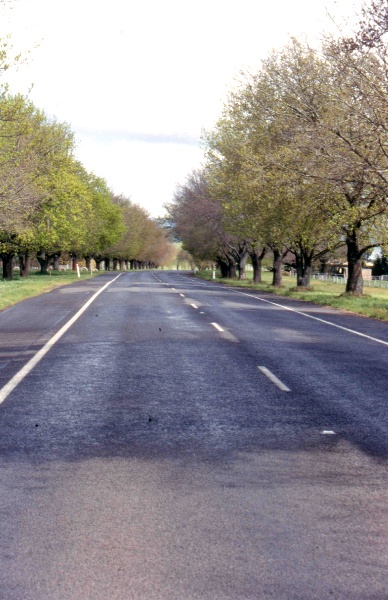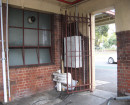Woodend Avenue of Honour
MACEDON - WOODEND ROAD WOODEND, Macedon Ranges Shire
-
Add to tour
You must log in to do that.
-
Share
-
Shortlist place
You must log in to do that.
- Download report





Statement of Significance
What is significant?
The Avenue of Honour, Woodend is an extensive oak avenue of 224 trees comprising English oaks (Quercus robur), Algerian oaks (Quercus canariensis) and oak hybrids Quercus canariensis x Q. robur planted on both sides of the road along a stretch of High Street, 2.5 kilometres in length starting near Clarkes Lane and extending south to Woodend. All trees once had memorial plaques to those who served in World War I but they are now in storage in Woodend. The trees were planted by the local community with each tree planted representing an enlisted soldier from the Woodend area. The opening ceremony for the Avenue was held on 14 September 1918.
How is it significant?
The Avenue of Honour, Woodend is of historical, social and aesthetic significance to the State of Victoria.
Why is it significant?
The Avenue of Honour, Woodend is of historical significance for exemplifying rural Victoria's reaction to World War I. It is representative of plantings that first appeared in Australia during World War I commemorating all those who enlisted for service in an egalitarian form where each individual, regardless of rank, was equally recognised for their service. It is one of only a small number of avenues in Victoria to use English Oaks.
The Avenue of Honour, Woodend is of aesthetic significance as a distinctive commemorative planting and a living memorial in the town of Woodend. It is an impressive visual and cultural landmark at the northern entrance to the town and a key landscape feature of the district.
The Avenue of Honour, Woodend is of social significance for its relationship with the community as a memorial to those who served in World War I and for its continuing commemorative importance. The Avenue of Honour, Woodend remains as an indication of the involvement of Victoria's small communities in commemorating the sacrifices of their volunteers, along with the loss and sorrow experienced in small rural areas like Woodend.
-
-
Woodend Avenue of Honour - Physical Conditions
State of the Historic Environment survey report - Condition: Good. See Events.
Veterans Description for Public
Woodend Avenue of Honour - Veterans Description for Public
The Woodend Avenue of Honour, along the Macedon-Woodend Road, was opened on 14th September 1918 to commemorate those who served in the First World War. In all, 224 English Oaks (Quercus robur), Algerian Oaks (Quercus canariensis) and Oak hybrids (Quercus canariensis x Q. robur) were planted. It is one of only a small number of avenues in Victoria to use English Oaks. All trees once had memorial plaques to those who enlisted but they are now in storage in the Woodend RSL.
The Avenue is planted on both sides of the road along a stretch of 2.5 kilometres in length, starting near Clarkes Lane and extending south to Woodend. A full list of allotted trees is given in the 1919 Woodend Star. The order in which the names were alloted is as follows:
Trees 1 -72, east side of avenue: G. Anderson, F.H.Giles, J.E.Giles, H.Giles, AAnderson, J.H.Anderson, to G. Dunn.
Trees 1-90, west side of avenue: E. d'A Bruun, E.J.Christie, etc. to P.Tyrrell, J. Falloon, AW.Keating, W.W.Jones, W.McDonald, R.Simpson, Bowe, C.Blackburn, Brae Watson, A Armitage, E.F.Walsh, P.O'Neill, B. O'Neill, Thos. Forge, George Purchase Jr., Claude Huffer.
The difference in tree numbers from the east to west side is explained by the position of the road at one point which prevented the planting of a continuous double row. It is not known who supplied the trees but Smith & Sons at Riddells Creek is a possible local supplier.
The avenue is an impressive visual and cultural landmark in the township of Woodend and provides an important definition of entrance and exit to the town as well as one of the most extensive memorials to those who served in the devastating First World War campaign.
A second avenue was planted, on the Tylden Road by the Woodend RSL, to commemorate those who fought in the Second World War, Korea and Vietnam.
In Australia, commemorative trees have been planted in public spaces since the late nineteenth century. Arbor Days were held regularly in most Victorian State Schools during the late 1800s and early 1900s, and numerous trees were planted in parks in Melbourne and throughout Victoria to mark the visits of important and famous people.
This tradition of commemorative planting was continued in 1901 when at the end of the Boer War trees were often planted for each soldier of the district who was killed in South Africa. These plantings, however, rarely consisted of more than two or three trees in each town.
During and after the First World War avenues of honour consisting of trees lining significant streets became a popular form of commemoration. They represented a new egalitarian approach to the commemoration of soldiers where rank was not a consideration: each tree symbolises a person.
Avenues of honour are a uniquely Australian phenomenon. Australians, and in particular Victorians, embraced the idea of planting them more enthusiastically than any other country in the world. Dating from May 1916, the Eurack Avenue of Honour is the earliest known avenue of honour to be planted in Victoria.
By the time of the Second World War avenues of honour had declined in popularity as a means of commemoration. Today it is estimated that over 300 avenues of honour have been planted in Victoria to commemorate service personnel since 1901.
Woodend Avenue of Honour - Permit Exemption Policy
/nThe purpose of the exemptions is to allow works that do not affect the cultural heritage significance of the place.
/nThe cultural heritage significance of the Avenue of Honour, Woodend is primarily as an intact commemorative planting which symbolises the response of a rural community to World War I. The significance of the Avenue of Honour lies in the uniform planting of the oaks.
Removal of any of the name plaques would be subject to permit application. Any restoration or repairs to the plaques should be carried out by a qualified conservator and only after consultation with Heritage Victoria.
-
-
-
-
-
WOODEND SHELTER SHED
 Victorian Heritage Inventory
Victorian Heritage Inventory -
Woodend Bridge over Five Mile creek
 National Trust
National Trust -
Islay
 National Trust
National Trust
-
-









